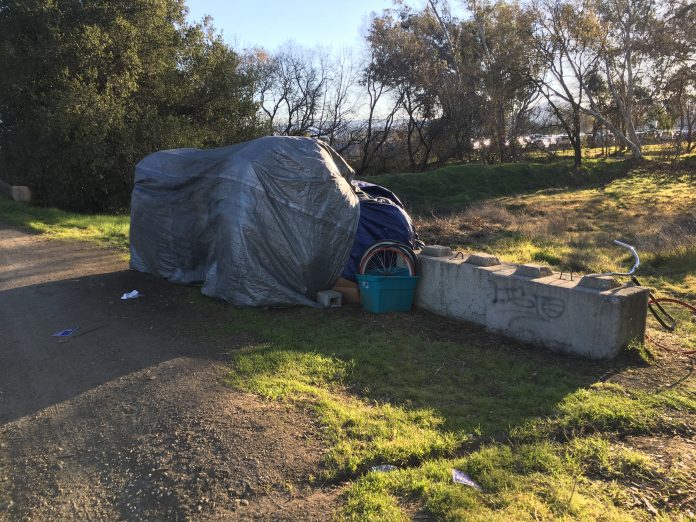The number of people without homes or shelter is increasing in Santa Clara County, and homeless advocates say Morgan Hill is taking the right first steps toward both short-term and long-term solutions.
“Morgan Hill has had a very progressive housing policy.,” said Jan Bernstein-Chargin, chair of the board of the Gilroy-based Compassion Center, which provides walk-in services for homeless people during the week and a hot meal every weekend.
She said Morgan Hill and Gilroy “are taking very different approaches.”
The Morgan Hill City Council’s decision allowing “safe parking” overnight for people living in cars, vans and RVs provides an important emergency alternative to living on the streets. Gilroy has stepped up enforcement of illegal overnight vehicles in shopping center parking lots. She said some Gilroy residents without homes head north in summer months for a more compassionate reception in Morgan Hill.
Bernstein-Chargin also said Morgan Hill’s “inclusionary zoning”—requiring a certain percentage of affordable homes for lower-income residents in new housing developments—is an important step to make more housing available citywide. More housing is needed, because the numbers of homeless people are growing.
In all of Santa Clara County, the homeless population grew by 31 percent over two years, from 7,394 to 9,706. That’s according to preliminary results from the county’s latest point-in-time census, which is part of a biennial nationwide tally for the U.S. Department of Housing and Urban Development.
Detailed numbers for the cities of Morgan Hill and Gilroy, plus demographic information, are expected to be reported next month when the complete homeless count is reported.
Homeless advocates in South County are critical of the Gilroy’s “hard-line” policies, which they said have not been effective in reducing homelessness, and called on Gilroy city leaders to declare a public emergency in hopes of making state aid available for year-round shelters.
The Compassion Center, St. Joseph’s Family Services and the Gardner Health Center are three Gilroy-based providers of services and referrals for the growing homeless population in the South County. But the most critical need—overnight shelter—disappears when the Gilroy Armory and the Arturo Ochoa Migrant Center close for six months each spring, she said.
The Gilroy-based agencies, Destination Home and the South County Homeless Task Force joined forces this month to conduct a workshop in Gilroy, aimed at local officials, to dispel a number of myths about homeless people and to focus on creating permanent year-round housing as the key step to easing living conditions for a growing homeless population.
Morgan Hill and Gilroy city council members and staff joined citizens from Gilroy and Morgan Hill at the May 6 session.
Bernstein-Chargin also said city and county officials and Valley Water could designate small sections of public parks and other publicly owned land as sites with sanitary facilities for year-round campgrounds for people without permanent shelter. She said the county, for example, had rebuffed an attempt to allocate a portion of Coyote Creek County Park for a homeless encampment.
When winter ends and the armory closes, she said, it “pushes everyone out to Uvas Creek, but they’re not allowed to stay there. At this point, there is now no legal place.
“Tonight, everybody is homeless, and everyone is a criminal, because everybody is sleeping in some place they are not allowed to be,” she said. “Your first day homeless? You’re a criminal by morning. These are our children, our neighbors, our brothers and sisters who need help, and we’re not providing it for them.”
Bernstein-Chargin added, “We have to do something differently, because what we have been doing has not been breaking through this lack of understanding. We have to think differently, we have to think about the system.”
She said public services, especially for health and mental health needs, are lacking in South County. “We have no way to get help for many people. We have no emergency psychiatric care in the South County.
“If we have somebody in need who walks into the Compassion Center, we can’t do direct referral to local mental health. We need a team that is located in South County,” she added.
“Some people say the problem isn’t homelessness; it’s mental health or it’s drugs,” said Bernstein-Chargin. “The problem is homelessness, because in order to address your mental health, you have to have a place to live, a place to sleep. In order to address a substance abuse problem, you have to have a place to be, a safe place. While you are in a state of crisis, you are not going to be able to solve any long-term problem.
“Just telling people you are not allowed to exist, it just doesn’t work.”
Bernstein-Chargin said there will be more workshops and public information sessions this summer.








